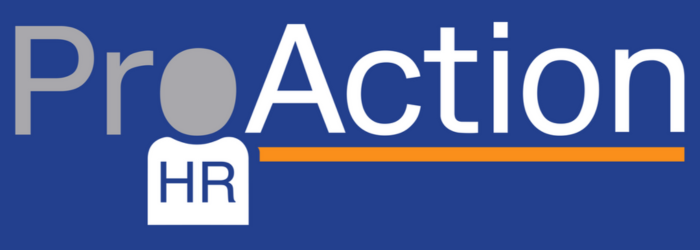Help people be true to themselves in a VUCA world
Written by Joanne Nicholson, co-founder of ProAction HR and business psychologist.
At our organisation, I champion individual differences, the importance of understanding why we behave the way we do and encourage showing compassion and vulnerability. I’m happy to profess to be a perfectionist, a people pleaser, and someone who experiences Imposter Syndrome. They are interesting dynamics and, as well as riding the challenges, I look to play to the strengths that they can also bring.
I wanted to add value to my coaching and change repertoire and was searching for a tool that can be used by individuals and organisations to help navigate in the VUCA (Volatility, Uncertainty, Complexity, Ambiguity) world, which now seems more VUCA than ever before (is there a new phrase for this – Mega VUCA?).
I think it’s important that we focus on the individual differences we all bring to an organisation, play to those strengths, and also how we can learn from those differences as well as benefit.
There are many personality tools available – so where to begin?
I needed a tool that was well respected (people pleaser, check), well-validated and reliable (imposter syndrome, check), and discernible and credible in training practitioners (perfectionist, check). But most of all, I wanted one which would be meaningful to the participant and also impactful to the organisation – which of course is a combination of the effectiveness of the tool and the skill of the person running the show. For me, Myers Briggs Personality Inventory (MBTI) ticked all of my boxes.
I’m delighted to say, here I am now, a qualified MBTI Step 1 practitioner, and I’d love to share some more information with you on how this can benefit your people and your organisation.
Myers Briggs Personality Inventory – a timely reminder how we are all different
I think most of us have an appreciation that we all have different personalities. We all perceive and react differently to a given situation, and what some see as a stress, others find a motivation. What some see as an opportunity, others can feel overwhelmed by the options.
Whilst there is a base understanding of these differences, we can still find ourselves feeling frustrated when these differences become apparent. A couple of examples spring to mind:
Example 1: When a colleague rejects all your proposals to work to a specified schedule to deliver a piece of work you are collaborating on. From the opposing view, your colleague can’t understand why you would want to pin them down to certain timescales, as they want to deliver their best work by following the inspiration when it comes.
Example 2: Have you ever had a colleague land at your desk and ask for a few minutes of your time so they can talk through a problem they have? Your colleague talks it all through, and before you have even had a chance to say anything, they have said what they needed, came to their own conclusion, and thanked you greatly for your time. You hadn’t said a word. You on the other hand, would prefer to sit and process the problem in your mind, and share the conclusion when you had formulated your own solution.
These two circumstances reflect 2 of the 4 aspects on the Myers Briggs Personality Inventory (known as MBTI).
An introduction to the Myers Briggs Personality Inventory
The MBTI is based on the work of psychologist Carl Jung, which was further developed and tested after the second world war, to help people be the best they can be during the post war economic challenges. The work was conducted by Myers and Briggs, a mother and daughter who vigorously tested the theory and devised a questionnaire, which has continued to be evaluated to the present day.
There are four pairs of personality types in MBTI:
The first pair is extraversion / introversion
The second pair is sensing / intuition
The third pair is thinking / feeling
And the last pair are judging / perceiving
This doesn’t mean too much when just reading it, however, by looking at your preference towards either element of the pair – we can identify how you process, gather information, decide, and take action in areas of your life.
The benefits of understanding your personality type
Knowing your own personality type can help you understand why you may behave in a particular way, or why you make some of the choices you make. In a work team context, it can help you understand why your colleague may behave in a certain way, or what information they need to make a decision. Going back to those two examples I gave earlier, you can see why this is important when working with others, particularly if you have different preferences.
What’s the value in taking the MBTI?
If you undertake the MBTI, you will find out your preference towards each aspect of each pair, and will come out with 4 letters representing each of your preferences. There are 16 possible combinations.
As an individual
You can come away with a detailed report showing characteristics, positives, how others see you, and areas for growth. In a coaching session, you can really start to identify how this learning can work for you, and what you want to take away from this knowledge.
Although it was 16 years ago when I first took the MBTI, I have never forgotten the 4 letters reflecting my personality type, and I remember feeling completely bolstered by knowing my strengths and feeling where I could best add value.
As part of a team exercise
Understanding the preferences of a team, you can start to understand why the dynamics are as they are, or where there may be some preferences not covered by anyone in the team, which may impact decision making and performance.
I had great fun participating in a MBTI workshop as part of a team building event. The day was fun, and I found out a lot about myself and my colleagues. There was definitely a light bulb moment when I realised how different some of my tendencies were to my colleagues which could have been the root to some of our “discussions”.
At a leadership level
It may become apparent that the preferences of the Leadership Team are very similar, which may not lend itself to the consideration of diverse staff when making strategic decisions or implementing change.
Other valuable outcomes
MBTI can also be used to understand how you respond to stress, can be used in conflict resolution, can help in a coaching scenario or career development.
How can this work for you and your organisation?
There are many different personality measures available, and sometimes it can be a minefield to find the one that works for you and your organisation. I have chosen MBTI for coaching and team development purposes as it is well-founded in research and has many associated insights that can be applied to aspects of your life. It’s important to note that MBTI is not a psychometric tool to be used for recruitment, its basic premise is that you may always choose to behave outside of your preference. However, we have written an article on how to use psychometric testing to make the right hire, first time every time using a tool which is validated for recruitment purposes.
MBTI is not just 4 letters, it’s 4 personality preferences that are dynamic in their relationship to one another. It’s complex and yet simple for the user. It’s also fun to conduct and participate in. It can make a difference to the individuals in your organisation to help them be their best, help teams work better together, and ultimately help the organisation obtain objectives.


